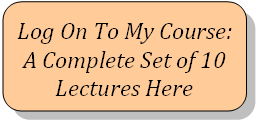Urban Simulation: Methods, Models and Planning Applications
A Series of Ten Lectures (the last a full Workshop) first presented at Arizona State University in late April 2010, and then at the School of Geography at Ritsumeikan University, Kyoto, Japan, October 12th – October 15th, 2010This course presents the basic elements of urban simulation, that is, methods and models which embody the science of cities as predictive computer models. The models included cover a wide range of types, each of which represents different aspects of the city systems that are codified in the form of simulation models. The first models developed were Land Use Transportation Models (sometimes called Land Use Transportation Interaction (LUTI) models) and these were first applied in North America from the late 1950s onwards. However a new genus of models has emerged from complexity theory and GIS only loosely relating to LUTI models. These models are based much more on representing the system using finer spatial cells closer to representing real development than the land use and traffic zones and they also focus on individuals or agents who act to change the development in these cells. These cellular automata (CA) and agent-based models (ABM), as they are called, have only loosely linked to mainstream LUTI models as yet. In the last three lectures in this series, we will sketch their rudiments.
We thus define Urban Simulation as subsuming Land Use Transportation, Cellular Automata and Agent-Based Models, but these also extend to related modelling approaches such as systems dynamics and micro simulation which we will also note but will not cover.
 In these nine lectures and the related workshops, we will cover as many of these model types as we can. If you click on the link left, this will take you to the CASA web site where the lectures are located.
In these nine lectures and the related workshops, we will cover as many of these model types as we can. If you click on the link left, this will take you to the CASA web site where the lectures are located.
